Attached files
| file | filename |
|---|---|
| 8-K - FORM 8-K - MERCURY SYSTEMS INC | d391606d8k.htm |
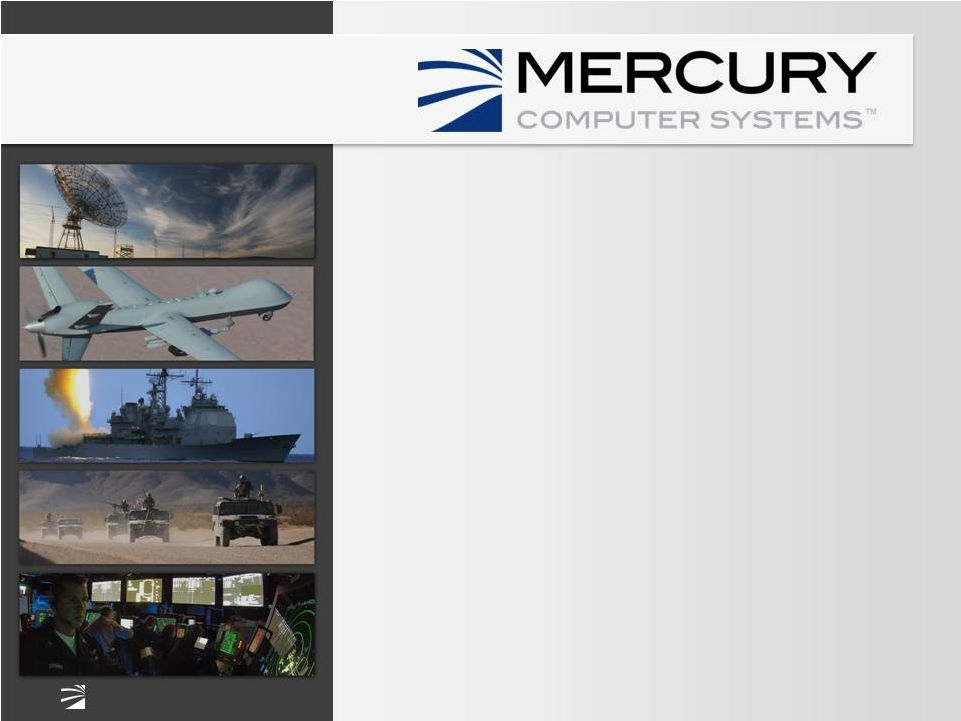 Jefferies 2012
Global Industrial and A&D
Conference
August 7, 2012
Mark Aslett
President & CEO
Kevin Bisson
SVP & CFO
Exhibit 99.1
©
2012 Mercury Computer Systems, Inc. |
 ©
2012 Mercury Computer Systems, Inc.
2
Forward-Looking Safe Harbor Statement
This press release contains certain forward-looking statements, as that term is defined
in the Private Securities Litigation Reform Act of 1995, including those relating to
business performance and the Company’s plans for growth and improvement in profitability and cash
flow. You can identify these statements by the use of the words “may,”
“will,” “could,” “should,” “would,” “plans,” “expects,”
“anticipates,” “continue,” “estimate,” “project,”
“intend,” “likely,” “forecast,” “probable,” and similar expressions. These forward-looking
statements involve risks and uncertainties that could cause actual results to differ
materially from those projected or anticipated. Such risks and uncertainties include,
but are not limited to, continued funding of defense programs, the timing of such funding, general
economic and business conditions, including unforeseen weakness in the Company’s
markets, effects of continued geopolitical unrest and regional conflicts, competition,
changes in technology and methods of marketing, delays in completing engineering and manufacturing
programs, changes in customer order patterns, changes in product mix, continued success in
technological advances and delivering technological innovations, changes in the U.S.
Government’s interpretation of federal procurement rules and regulations, market
acceptance of the Company's products, shortages in components, production delays due to
performance quality issues with outsourced components, inability to fully realize the
expected benefits from acquisitions and divestitures or delays in realizing such benefits,
challenges in integrating acquired businesses and achieving anticipated synergies, changes to
export regulations, increases in tax rates, changes to generally accepted accounting
principles, difficulties in retaining key employees and customers, unanticipated costs under
fixed-price service and system integration engagements, and various other factors beyond
our control. These risks and uncertainties also include such additional risk factors
as are discussed in the Company's filings with the U.S. Securities and Exchange Commission, including
its Annual Report on Form 10-K for the fiscal year ended June 30, 2011. The Company
cautions readers not to place undue reliance upon any such forward-looking
statements, which speak only as of the date made. The Company undertakes no obligation to update any
forward-looking statement to reflect events or circumstances after the date on which such
statement is made. Use of Non-GAAP (Generally Accepted Accounting Principles) Financial Measures
In addition to reporting financial results in accordance with generally accepted accounting
principles, or GAAP, the Company provides adjusted EBITDA and free cash flow, which
are non-GAAP financial measures. Adjusted EBITDA excludes certain non-cash and other
specified charges. Free cash flow is defined as cash flow from operating activities less
capital expenditures. The Company believes these non-GAAP financial measures
are useful to help investors better understand its past financial performance and prospects for the future.
However, the presentation of adjusted EBITDA and free cash flow is not meant to be considered
in isolation or as a substitute for financial information provided in accordance with
GAAP. Management believes the adjusted EBITDA and free cash flow financial measures assist in
providing a more complete understanding of the Company’s underlying operational results
and trends, and management uses these measures along with the corresponding GAAP
financial measures to manage the Company’s business, to evaluate its performance
compared to prior periods and the marketplace, and to establish operational goals. A
reconciliation of GAAP to non-GAAP financial results discussed in this
presentation is contained in the Appendix hereto.
|
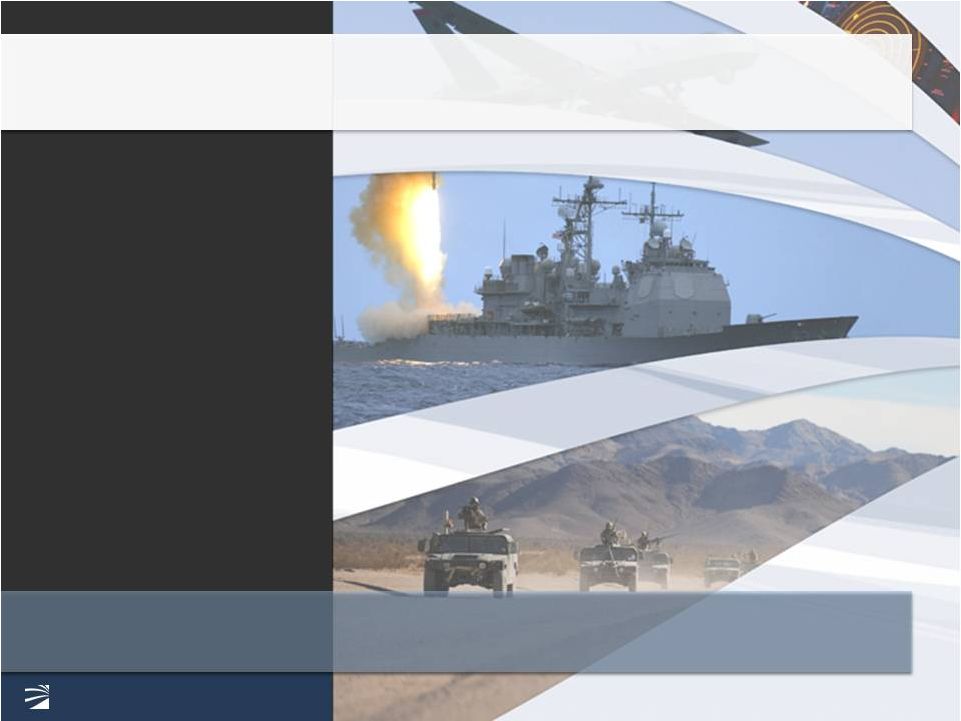 Introducing
Mercury Computer Systems •
MRCY on NASDAQ
•
Real-time digital image,
signal and sensor processing
•
Commercial-item company
unique business model
•
Focused on DoD priorities
•
Deployed on ~300 programs
with 25+ Primes
•
$245M FY12 revenues;
20% Adj. EBITDA margin;
700+ employees
•
Defense revenue 76%
growth (15% CAGR) FY08–
FY12
Best-of-breed provider of open, commercially developed,
sensor processing subsystems for ISR and EW
©
2012 Mercury Computer Systems, Inc.
3 |
 ©
2012 Mercury Computer Systems, Inc.
4
•
FY12 Defense budget approved -
$530B base spending
•
FY13 Defense budget request announced -
$525B base spending
•
Budget Control Act reduced FYDP spend growth vs 2012 request
•
Budget Control Act Jan 2013 sequester
•
6 month Continuing Resolution likely beginning October 1st
©
2012 Mercury Computer Systems, Inc.
Slower
growth
in
defense
spending
anticipated
over
next
5
years
4
Defense industry turning the page on a decade of war
Source: DOD Comptroller 2012 Budget Request |
 5
•
New DoD roles and missions announced
•
Smaller force structure to protect readiness
•
Increased investment in key areas e.g. ISR, EW
•
Build capacity and capability of international partners
•
Defense procurement reform also underway
…
where there will be clear winners and losers
5
In the near term we believe the industry is in a
12-18 month transition period …
©
2012 Mercury Computer Systems, Inc. |
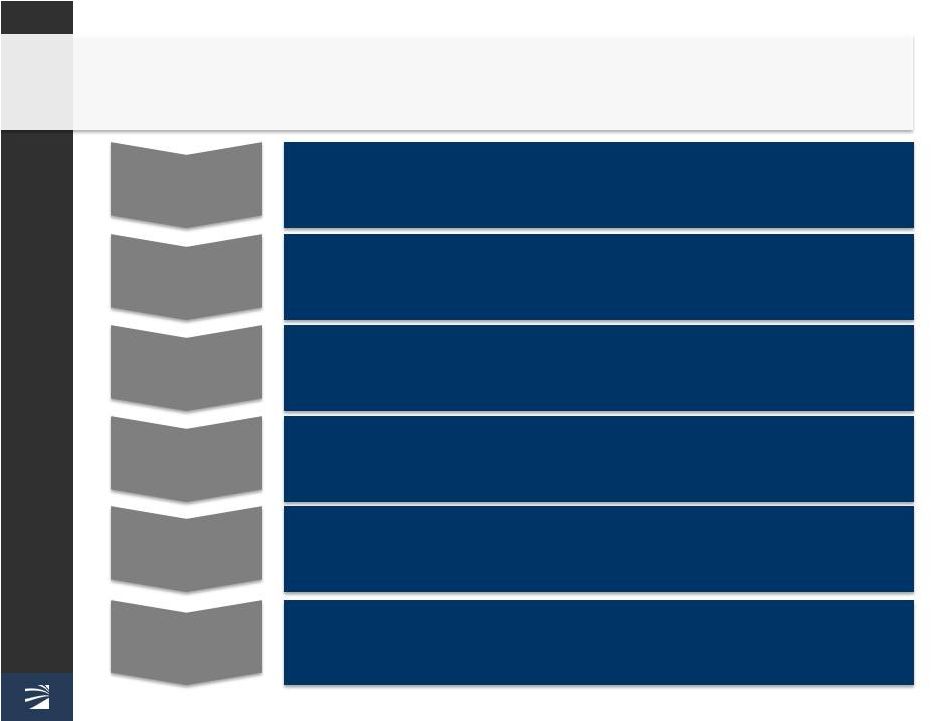 Mercury
investment highlights Pure-play C4ISR, EW and defense electronics company
entrenched on a diverse mix of programs aligned with DoD priorities
Best-of-breed provider of specialized sensor processing
subsystems to large defense Primes targeting platform upgrades
Increased ISR usage, shift to onboard processing and exploitation and
evolving EW threats driving greater demand for Mercury solutions
Well positioned to benefit from DoD procurement reform, which
is driving increased outsourcing by the large defense Primes
Well-defined strategy with a demonstrated track record of
double-digit defense revenue growth and improved profitability
Successful transformation has positioned the business for strong
organic growth augmented through strategic acquisitions
©
2012 Mercury Computer Systems, Inc.
6
Differentiated
Capabilities
Favorable Macro
Industry Trends
Unique Business
Model
Proven
Management
Team
Well Positioned
for Growth
Leading Market
Position |
 Mercury has
strategically positioned its business to grow Growth strategy summary
1.
Expand our capabilities and offerings along sensor chain
2.
Expand market presence within defense electronics
3.
Continue to grow our customer and program base
4.
Capitalize on Prime outsourcing / supply chain consolidation
5.
Acquire complementary companies
©
2012 Mercury Computer Systems, Inc.
7 |
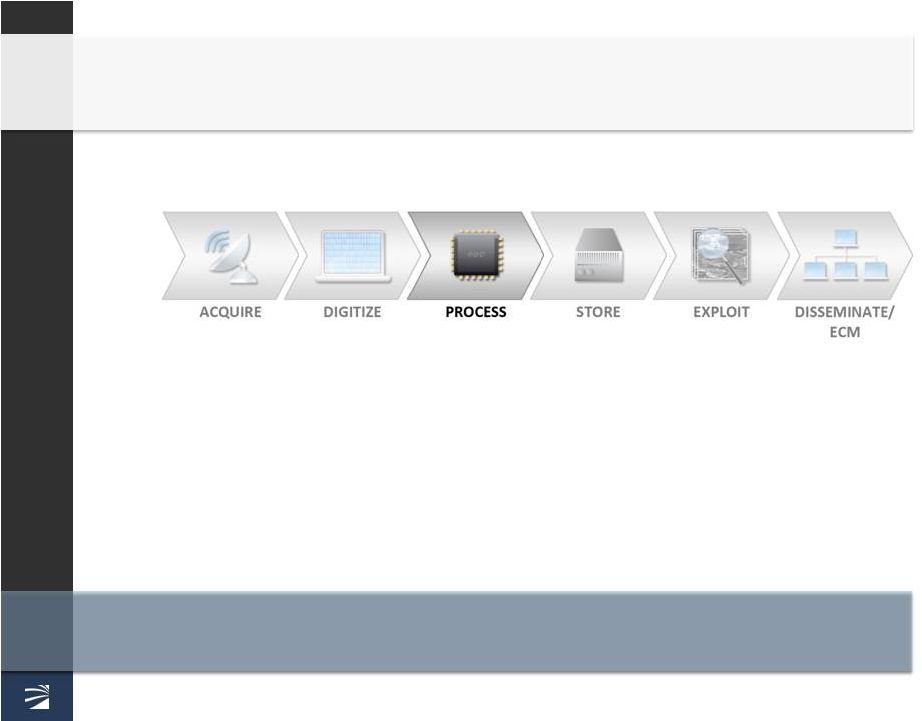 Historically,
Mercury focused on one element of sensor chain We are the leader in high-performance
embedded computing RACE++ Boards
From
©
2012 Mercury Computer Systems, Inc.
8 |
 We now view our
market opportunity as providing end-to-end open sensor processing subsystems
– a much larger opportunity
We are systematically growing our capabilities, services and
offerings along the sensor chain organically and by acquisition
Services
and Systems Integration
To
RACE++ Boards
From
Open Sensor Processing Subsystems
©
2012 Mercury Computer Systems, Inc.
9 |
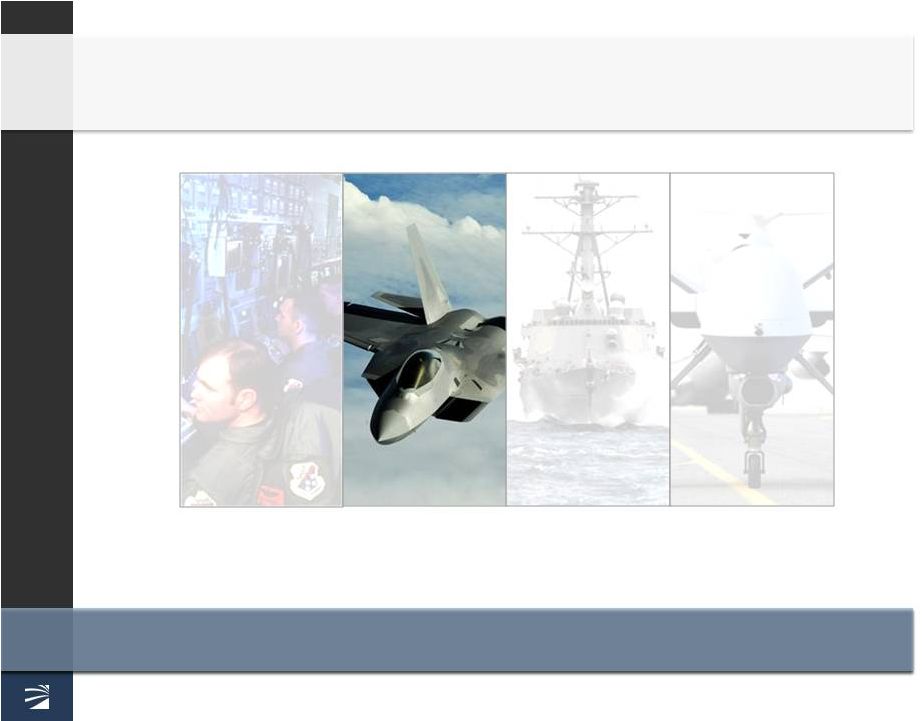 Mercury’s
traditional market was narrowly defined as airborne radar processing …
... limiting our growth potential within the C4ISR market
C4ISR
$8,796M
22%
Source: The Teal Group June 2011, World Defense Electronics Funding Available to the US FY13;
excludes Sonar and Other totaling $4,212M (11%). ©
2012 Mercury Computer Systems, Inc.
10
EW
EO/IR
C4I
RADAR |
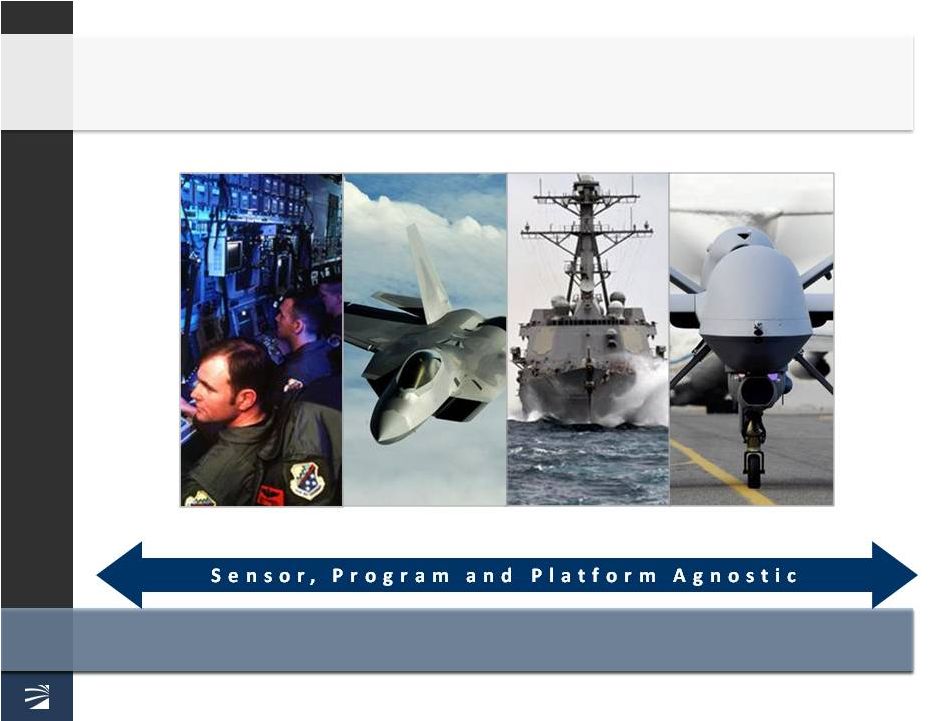             11
Since then, we have systematically broadened our
addressable market within C4ISR …
C4ISR
$8,796M
22%
$6,910M
17%
$8,624M
21%
$11,812M
29%
Source: The Teal Group June 2011, World Defense Electronics Funding Available to the US FY13;
excludes Sonar and Other totaling $4,212M (11%). RADAR
EO/IR
C4I
…
by investing in new products and capabilities
©
2012 Mercury Computer Systems, Inc.
EW |
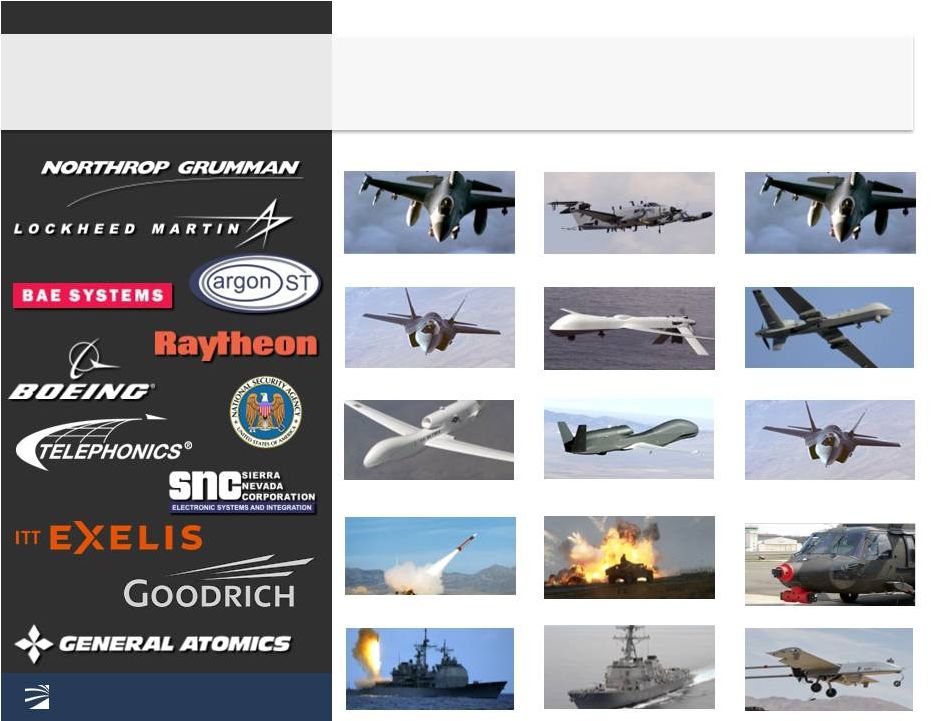 12
We are deployed on 300+ programs with 25+ Primes
RADAR
EW
EO/IR –
C4I
BAMS
Global Hawk
SEWIP
AEGIS
AEGIS Ashore
Guardrail
Patriot
Predator
Reaper
Gorgon Stare
F-16
JCREW 3.3
ADAS
Shadow
Global Hawk
F-35
F-35
F-16
©
2012 Mercury Computer Systems, Inc. |
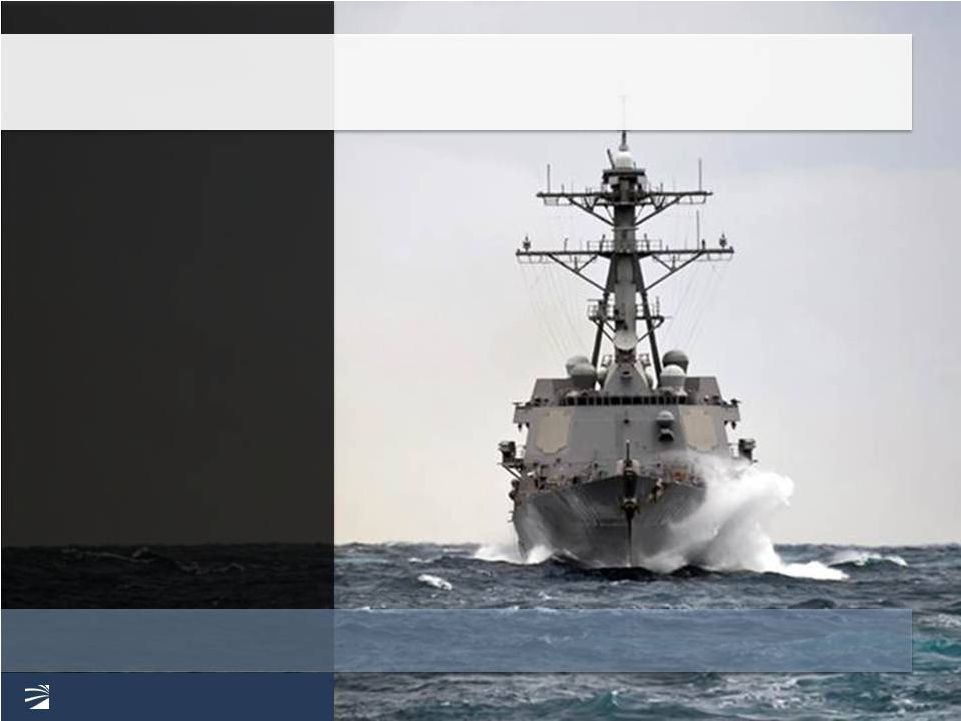 Aegis
ballistic missile defense: SPY-1 BMD Radar •
Countering rogue nations’
ballistic missile threats
•
Highest performance radar
processor Application Ready
Subsystem
•
$10M booked in FY12,
$80M+ booked to date
•
Additional 27 ship sets
scheduled through GFY16
•
AMDR selection in FY13
-
partnering with LM
Mercury’s largest single program in production to date
Mercury’s largest single program in production to date
©
2012 Mercury Computer Systems, Inc.
13 |
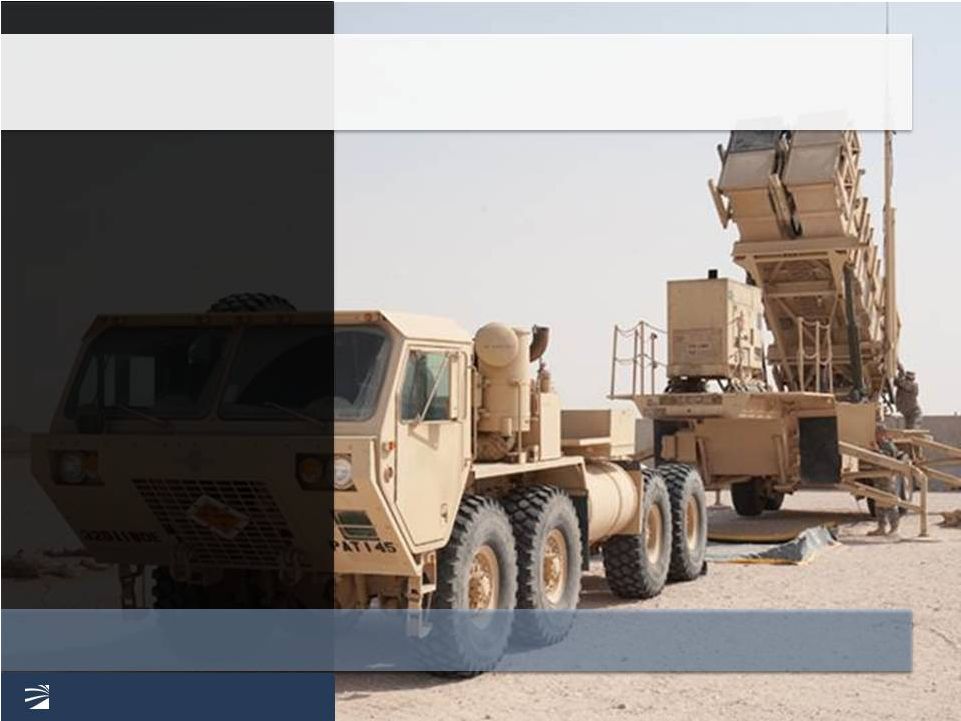 ©
2012 Mercury Computer Systems, Inc.
Program in production; FMS and US Army upgrade driving growth
Program in production; FMS and US Army upgrade driving growth
Patriot missile defense: Next generation ground radar
•
Services-led design win –
Prime outsourcing example
•
Sophisticated radar
processor Application Ready
Subsystem
•
Production awards received
to date: $50M
–
UAE, Taiwan, Saudi Arabia
•
Potential future FMS awards
–
Up to 15 countries including
Turkey, Qatar, Kuwait, etc
•
US Army Patriot upgrade
could begin in GFY13
–
First PO received for US Army
©
2012 Mercury Computer Systems, Inc.
14 |
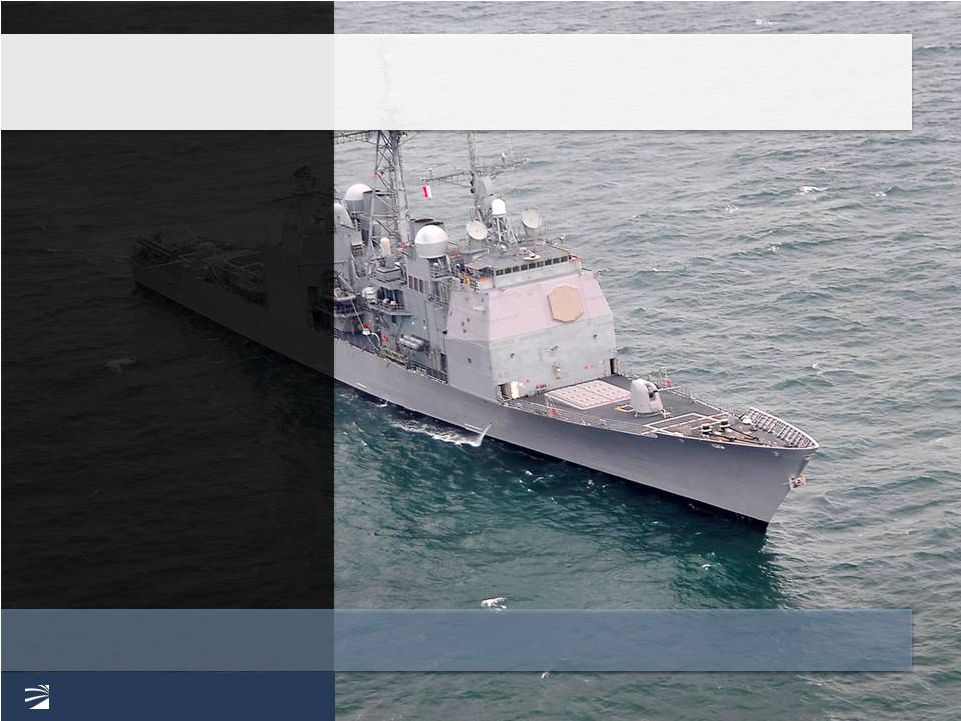 SEWIP Block 2:
Countering new emerging peer threats •
Naval surface fleet EW
upgrade: 100+ ships
•
Delivered best-of-breed EW
Application Ready Subsystem
•
Expected to move from EMD
phase to LRIP in next 12
months
•
Production begins GFY15
•
Upside opportunities with
Block 1 upgrade and Block 3
•
Lockheed and Raytheon
partnering on SEWIP Block 3
Strong partnership with Prime driving Mercury content expansion
Strong partnership with Prime driving Mercury content expansion
©
2012 Mercury Computer Systems, Inc.
15 |
 JCREW I1B1
(3.3): Joint services CIED program of record Software defined jammer to defeat roadside
bombs •
JCREW I1B1 program of
record in FY13 budget
•
Program currently in EMD
(engineering) phase
•
Milestone C next official gate.
Signifies transition to Low Rate
Initial Production (LRIP)
•
Program experiencing delays:
–
Funding in Marine Corps
GY13 budget request
•
US Marine Corps req’ts:
–
Total : 3100 mounted,
790 man portable, 13 fixed sites
–
GFY13 : 1020 mounted,
790 man portable
Expect move from EMD phase into Low Rate Initial Production
Note: Mercury was not involved in prior generations
16
©
2012 Mercury Computer Systems, Inc. |
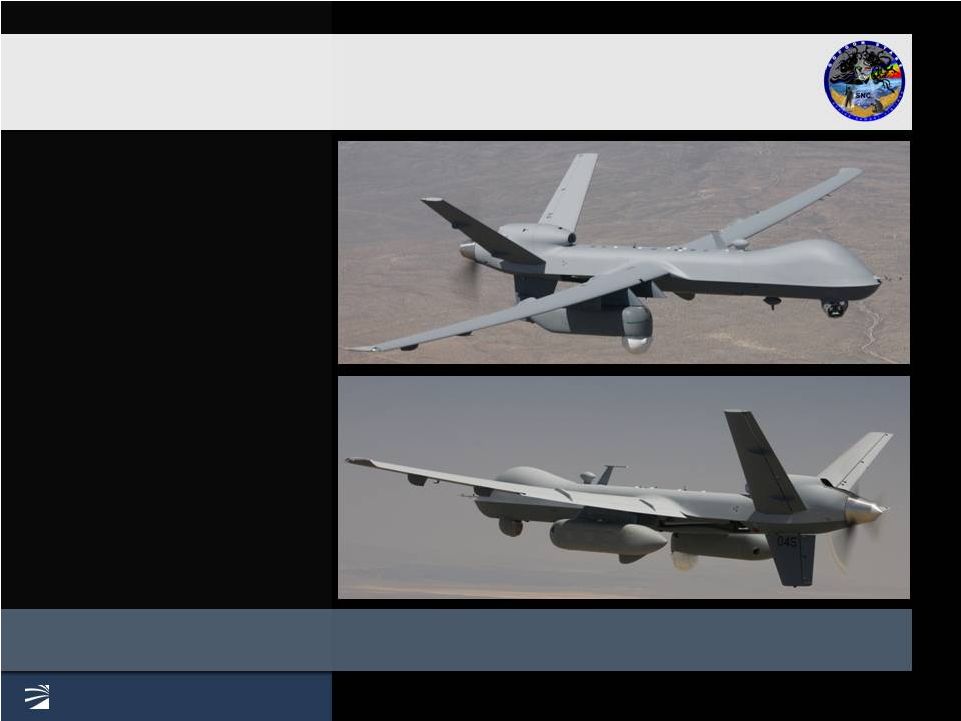       ©
2012 Mercury Computer Systems, Inc.
17
Gorgon Stare Increment 2
New program win
•
Increment 2
–
Total contract potential
$31-37M
–
$25M booked FY12
–
Quick reaction capability;
delivery in 18 months
–
New onboard processor
and storage for advanced
wide area sensors
–
Potential upside: flight
systems and spares
•
Future Increments to GFY18
–
Processor upgrades
–
Onboard multi-INT fusion
–
PED improvements
Several opportunities for growth over the next 3-6 years
17
©
2012 Mercury Computer Systems, Inc. |
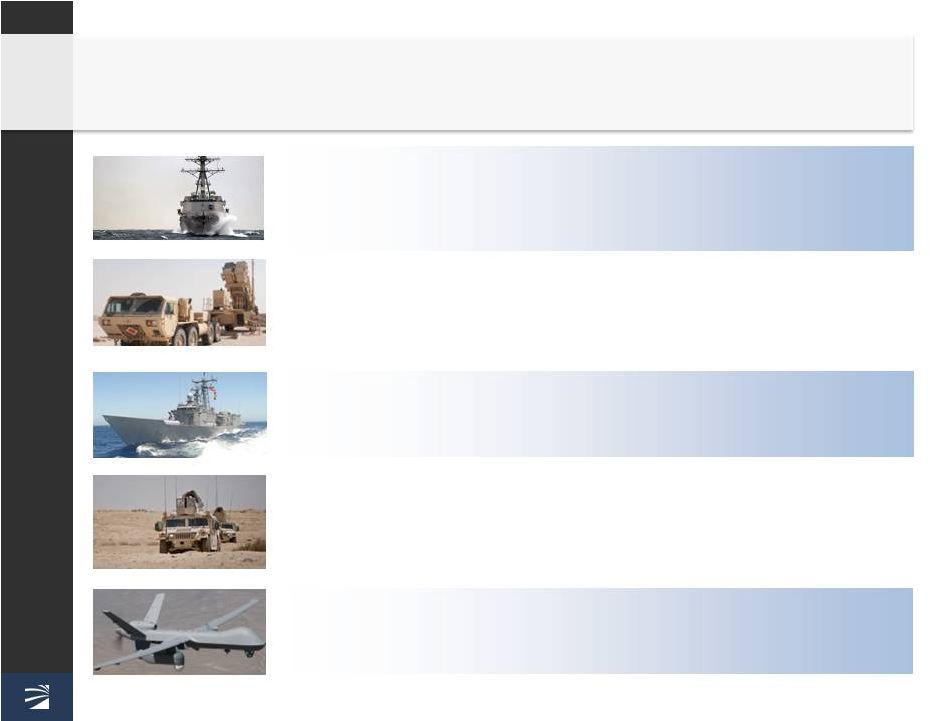       ©
2012 Mercury Computer Systems, Inc.
18
Program growth driver update
JCREW I1B1 (3.3): Counter-IED
Program expected to transition from EMD phase to LRIP
Patriot: Missile Defense
U.S. Army upgrades expected to begin in GFY13; FMS Sales
Aegis: Ballistic Missile Defense
Well-defined upgrade provides foundational revenue
SEWIP: Naval Electronic Warfare
LRIP expected to begin GFY13
Gorgon Stare: Wide-area airborne surveillance
Continued work on Increment 2
©
2012 Mercury Computer Systems, Inc.
18 |
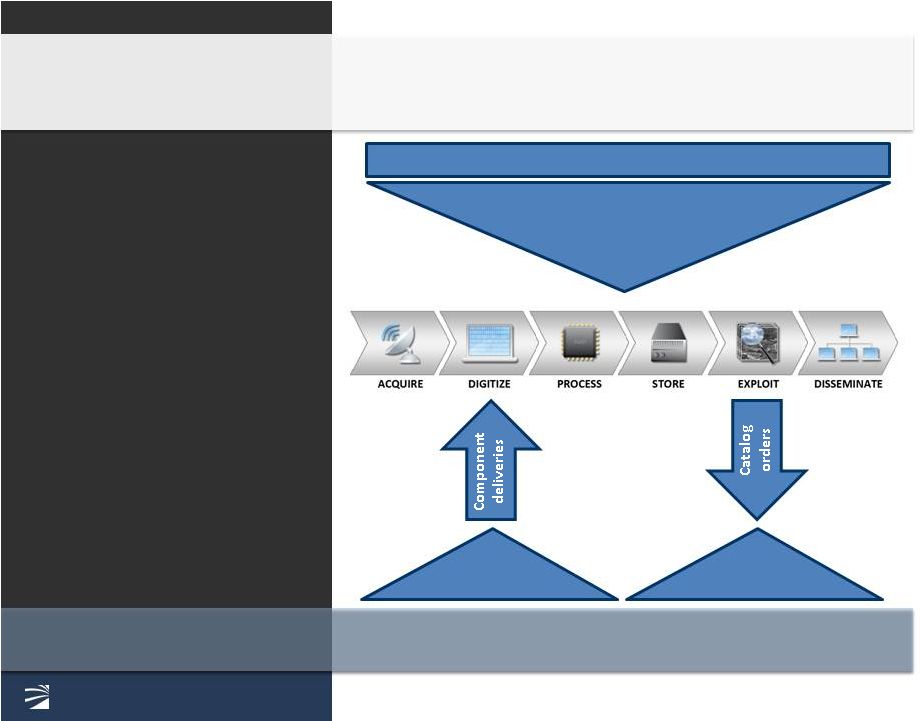          ©
2012 Mercury Computer Systems, Inc.
19
Embedded
computing consolidation
Primes reducing in-house engineering while
consolidating supply chain for subsystem
design & integration
Primes retaining platform system design & integration
RF component
/ assembly consolidation
Outsourcing could substantially increase our market
opportunity even with defense spending cuts
•
Reduce risk given firm-fixed
price contracts
•
Address high-fixed cost
operating model
•
Increase success rate on new
programs and production
recompetes
•
Develop differentiated, more
affordable solutions with fewer
internal R&D dollars
•
Compress upgrade
development and deployment
cycles
•
Consolidate supply base at
subsystem level
Mercury has strategically positioned its business to help
©
2012 Mercury Computer Systems, Inc.
19 |
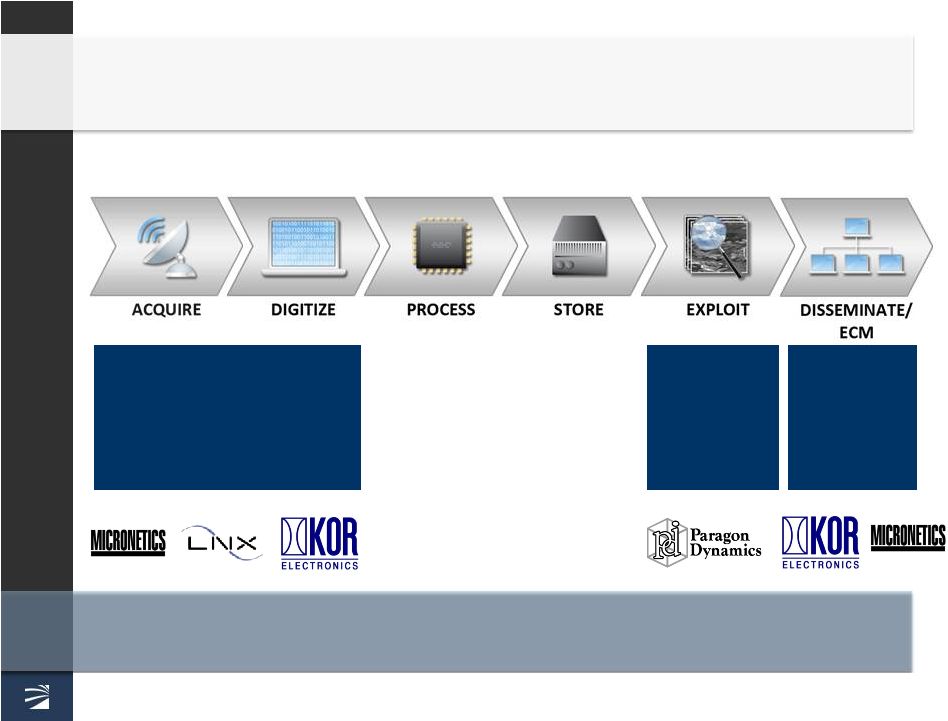 ©
2012 Mercury Computer Systems, Inc.
20
Exploitation
and
Fusion
Tailored feeds
directly to field
forces or ECM
RF acquisition targets:
RF transmitters / receivers
Power amplifiers
Synthesizers
DRFM
Through acquisition we are creating a unique, scalable
microwave, RF and digital solutions platform
Sensor Processing Chain
We view our market opportunity as providing end-to-end,
open sensor processing subsystems to the Primes |
 ©
2012 Mercury Computer Systems, Inc.
21
Supplement organic growth and capability via
complementary acquisitions
Leading
designer
and
manufacturer of microwave
and RF subsystems and
components for defense and
commercial customers
Applications
include
electronic
warfare, radar, electronic
countermeasures, satellite
communications and
commercial wireless products
Announced
transaction
value
of $75 million, immediately
accretive to EBITDA
Micronetics
FY
2012
revenue
$46 million (30% YoY growth),
$3.4 million of earnings, $26
million backlog
Expected
to
close
in
Mercury
FQ1 2013
•
Driving growth through acquisition
–
Grow ACS in ISR and EW markets by adding
capabilities along sensor processing chain
–
MFS acquire multi-INT exploitation capability
and channel to intelligence community
–
Add Mercury content and services to existing
and future defense and intelligence programs
•
Focus on the following characteristics:
–
Tens of millions revenue to start
–
Demonstrated profitability and growth
–
Accretive on an EBITDA basis within 12 months;
GAAP EPS accretive within reasonable period
•
Proprietary pipeline of targets
–
Attractive destination for target companies
Acquisition Case Study:
Micronetics
©
2012 Mercury Computer Systems, Inc.
21 |
 Positioned for
growth in a changing industry •
Focused on the right defense market segments
•
Well positioned on key programs and platforms
•
Capabilities help address today’s and tomorrow’s threats
•
Business model aligned with defense procurement reform
•
Outsourcing partner to the Primes for sensor subsystems
•
Strong defense revenue growth and improved profitability
•
Pursuing complementary acquisitions to accelerate growth
22
©
2012 Mercury Computer Systems, Inc. |
 ©
2012 Mercury Computer Systems, Inc.
Financial Overview
©
2012 Mercury Computer Systems, Inc. |
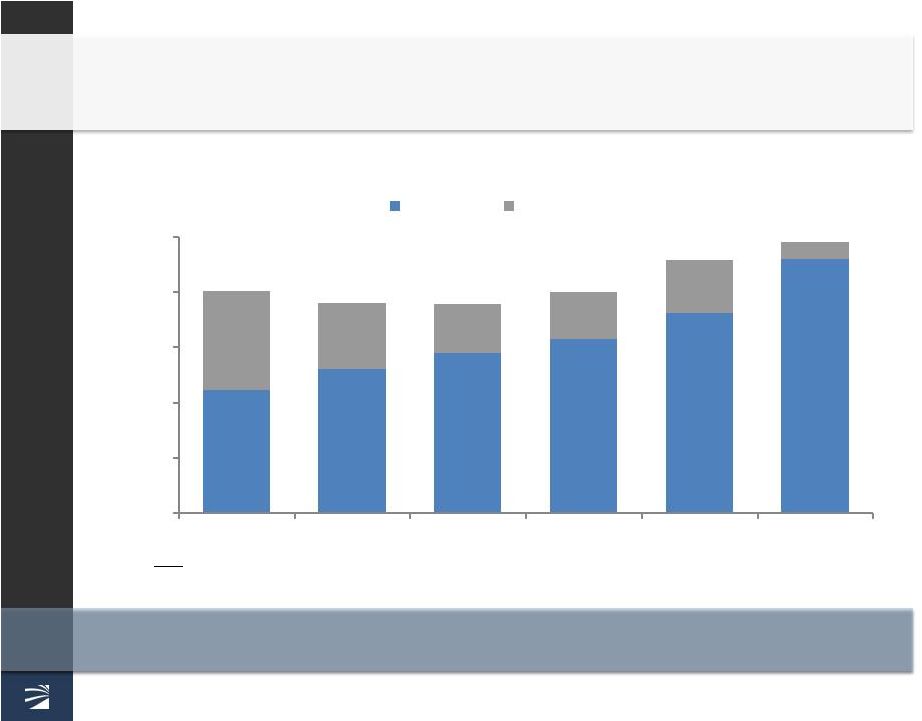 ©
2012 Mercury Computer Systems, Inc.
24
Defense revenue growth accelerating
27% defense revenue growth YoY in FY12
Defense: 16% CAGR FY07-12
111
130
145
158
180
230
89
60
44
42
48
15
0
50
100
150
200
250
FY07
FY08
FY09
FY10
FY11
FY12
Revenue ($M)
Defense
Commercial
190
189
200
229
245
201
Notes:
•
FY07-10 figures adjusted for discontinued operations. |
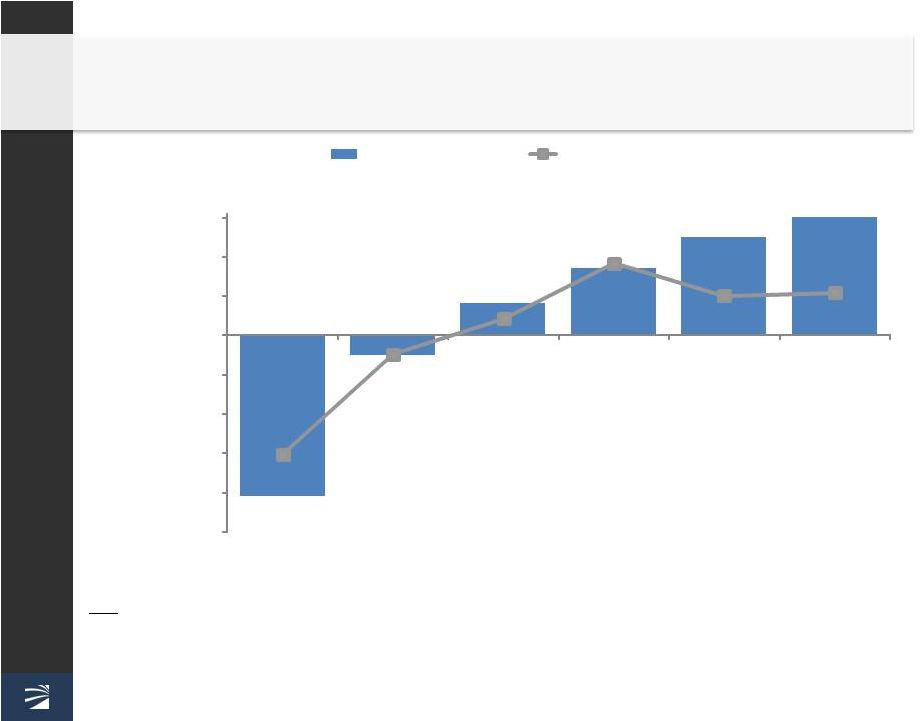 ©
2012 Mercury Computer Systems, Inc.
Profitability restored and improving
(41)
(5)
8
17
25
30
($1.78)
($0.21)
$0.35
$1.22
$0.71
$0.75
-50
-40
-30
-20
-10
0
10
20
30
FY07
FY08
FY09
FY10
FY11
FY12
Operating Income $M
Earnings per Share
25
Notes:
•
FY07 figures are as reported in the Company’s fiscal 2007 Form 10K and have not been
restated for discontinued operations.
•
FY08 figures are as reported in the Company’s fiscal 2010 Form 10K. FY09-11 figures
are as reported in the Company’s fiscal 2011 Form 10K.
•
FY10 Earnings per Share of $1.22 were positively influenced by $0.68 from the partial
reversal of the valuation allowance against deferred tax assets and an effective
FY10 tax rate benefit of approximately 5%.
•
FY11 and FY12 EPS includes the impact of 5.6M additional shares from our follow-on public
stock offering on February 16, 2011. |
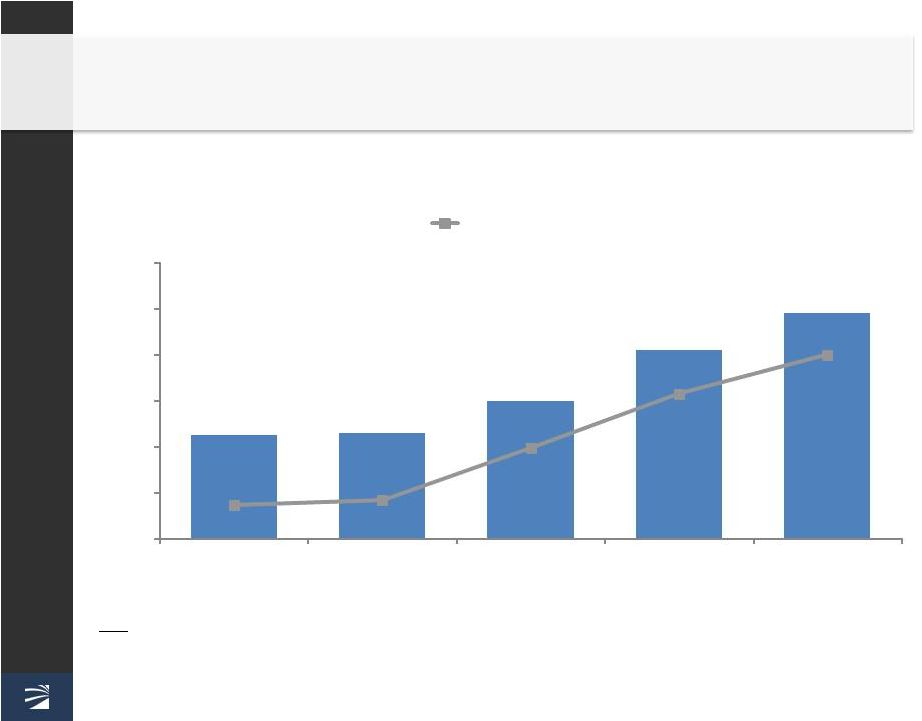 ©
2012 Mercury Computer Systems, Inc.
Adjusted EBITDA above pro forma target
23
23
30
41
49
12%
12%
15%
18%
20%
0
10
20
30
40
50
60
FY08
FY09
FY10
FY11
FY12
Adj. EBITDA ($M, %)
EBITDA Margin %
26
Notes:
•
FY08 figures are as reported in the Company’s fiscal 2010 Form 10K. FY09-11 figures
are as reported in the Company’s fiscal 2011 Form 10K.
•
Adjusted EBITDA excludes interest income and expense, income taxes, depreciation,
amortization of acquired intangible assets, restructuring expense, impairment of
long-lived assets, acquisition and other related expenses, fair value adjustments from purchase accounting, and stock-
based compensation costs.
|
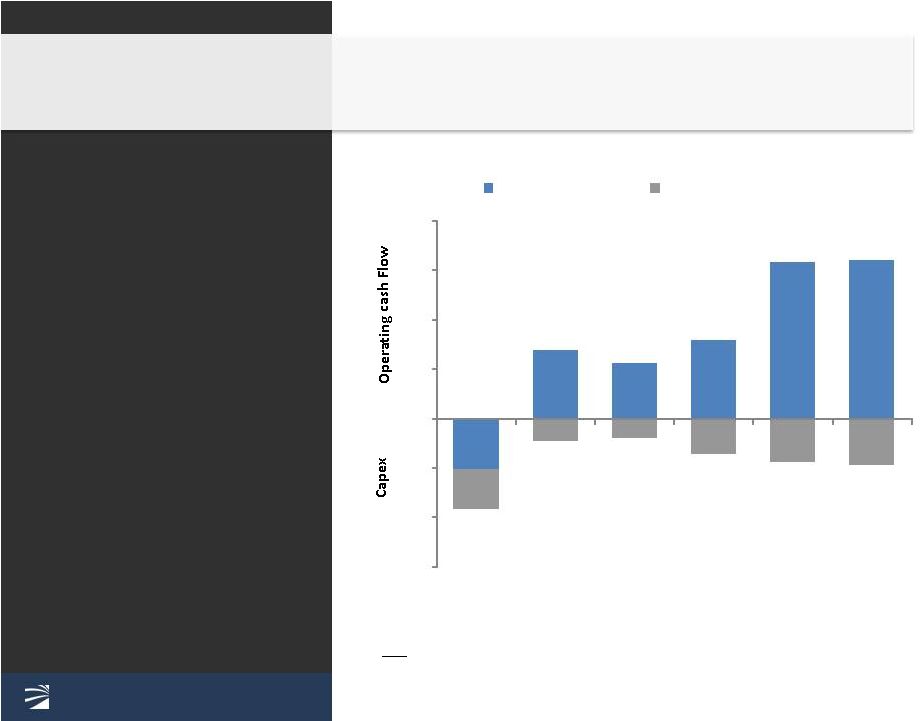 Generating
healthy free cash flow from operations •
Engineering and supply
chain transformation
–
Engineering methods
–
Investments in DFM
–
Operational efficiencies
–
Reduced lead times
–
Improved cost of quality
–
Outsourced manufacturing
Note:
•
Free cash flow is defined as cash provided by operating activities less capital
expenditures. ©
2012 Mercury Computer Systems, Inc.
(10)
14
11
16
31
32
(8)
(5)
(4)
(7)
(9)
(9)
-30
-20
-10
0
10
20
30
40
FY07
FY08
FY09
FY10
FY11
FY12
Free Cash Flow $M
Operating cash flow
Capital expenditures
9
7
8
23
22
(18)
27
•
Efficient working capital
platform supports growth |
 ©
2012 Mercury Computer Systems, Inc.
28
Balance sheet poised for investment
No short and long term debt
Other financing sources available:
•
$35M Operating line of credit
(no drawdowns)
74
23
94
25
163
(70)
116
0
20
40
60
80
100
120
140
160
180
200
Q4'10 Ending
LNX Acq, Net
Stock Offering, FY11 Free Cash
Net
Flow & Other
Q4'11 Ending
FY12 Free Cash
Flow & Other
KOR Acq
Q4'12 Ending
Cash and Marketable Securities ($M)
(30)
•
$500M Shelf Registration |
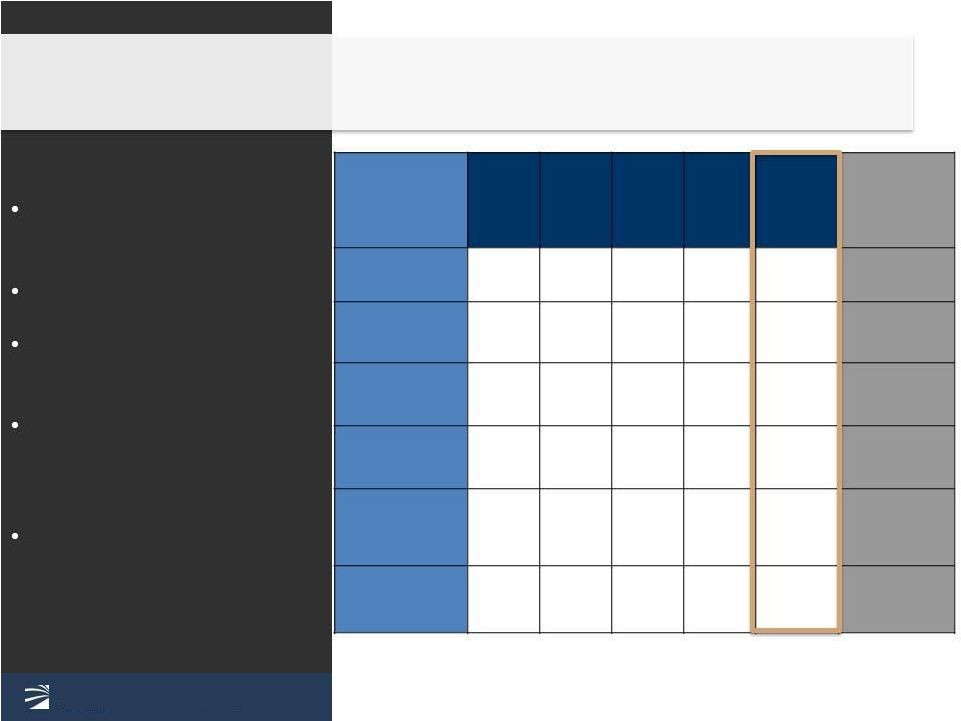       ©
2012 Mercury Computer Systems, Inc.
29
Achieved current target business model
•
ACS : MFS revenue split
88% : 12% respectively
•
High mix, low volume
•
R&D delivering significant
added value and returns
•
Increased lower margin
engineering services and
systems integration
•
Services-led design wins lead
to long-term production
subsystem annuity revenues
(1)
Other OPEX includes Amortization of Acquired Intangible Assets, Impairment of Goodwill and
Long Lived Assets, Change in the fair value of the liability related to the LNX
earn-out, Restructuring, Gain on Sale of Long Lived Assets, and Acquisition Costs
and Other Related Expenses. GAAP
FY08
FY09
FY10
FY11
FY12
Target
Business
Model
Revenue
100%
100%
100%
100%
100%
100%
Gross
Margin
58%
56%
56%
57%
56%
54+%
SG&A and
Other OPEX(1)
37%
29%
27%
26%
25%
Low-mid
20’s
R&D
24%
22%
21%
19%
19%
High Teens
Operating
Income
(3%)
4%
9%
11%
12%
12-13%
Adj. EBITDA
12%
12%
15%
18%
20%
17-18% |
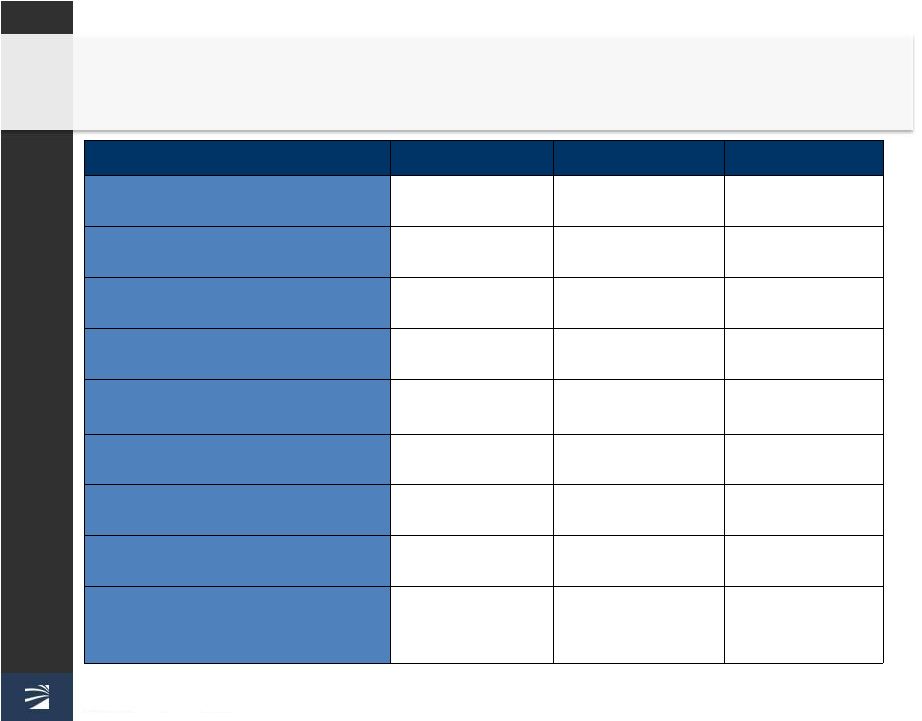       30
GAAP
FY12
FY11
Delta
Total Revenue ($M)
245
229
7%
Defense Revenue ($M)
230
180
27%
Gross Margin
% Revenue
55.6%
56.8%
(1.2 pts)
Operating Expenses ($M)
106
105
1
Operating Income ($M)
% Revenue
30
12.3%
25
10.9%
5
1.4 pts
Adj EBITDA
49
41
8
EPS (Continuing Operations)
$0.75
$0.71
$0.04
Op Cash Flow ($M)
32
31
1
Bookings
Total Backlog ($M)
12-mo Backlog($M)
231
105
92
202
87
71
14%
20%
30%
FY12 year over year comparison (GAAP)
©
2012 Mercury Computer Systems, Inc. |
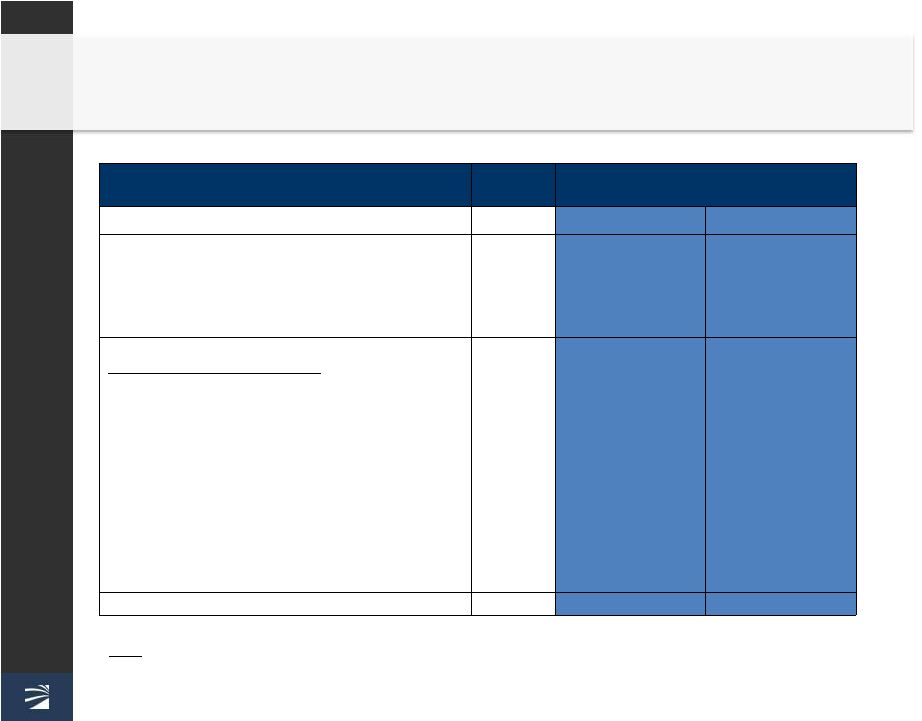       31
Q1 FY13 guidance (excluding Micronetics)
Q1 FY12
Actual
Quarter Ending September 30, 2012
Low
High
Revenue
$49
$51
$57
GAAP EPS (Continuing)
$0.09
($0.05)
$0.00
Adj EBITDA
$8.7
$4.0
$6.7
Note -
Adj EBITDA Adjustments:
Net income (Continuing)
2.7
(1.7)
0.0
Interest (income) expense, net
0.0
0.0
0.0
Income tax (benefit) expense
1.3
(0.9)
0.0
Depreciation
1.9
2.2
2.2
Amortization of acquired intangible assets
0.8
1.1
1.1
Acquisition costs and other related expenses
0.0
0.2
0.2
Restructuring expenses
0.0
0.4
0.4
Fair value adjustments from purchase accounting
0.0
0.0
0.0
Stock-based compensation cost
2.0
2.7
2.7
Adj EBITDA
$8.7
$4.0
$6.7
Notes:
The guidance included herein is from the Company’s earnings release and is as of the
date of the earnings release. The Company is neither reconfirming such guidance
as of the date of this presentation nor assuming any obligations to update or revise such guidance.
©
2012 Mercury Computer Systems, Inc. |
 ©
2012 Mercury Computer Systems, Inc.
32
Guidance: Strong performance track record
Q1
Q2
Q3
Q4
Reported
Guidance
Reported
Guidance
Reported
Guidance
Reported
Guidance
2008
Revenue
($M)
49.2
48.0
52.6
51.0
56.5
53.0-55.0
55.2
53.0-56.0
EPS ($)
0.09
(0.08)
0.04
(0.05)
0.04
(0.04)-0.00
0.01
(0.05)-0.01
2009
Revenue
($M)
49.1
47.0-49.0
50.7
47.0-49.0
50.6
48.0-50.0
48.4
46.0-48.0
EPS ($)
0.07
(0.07)-(0.03)
0.03
(0.05)-0.00
0.20
0.05-0.09
0.13
0.05-0.08
2010
Revenue
($M)
47.4
43.0-45.0
45.2
40.0-42.0
43.6
41.0-43.0
63.6
58.0-60.0
EPS ($)
0.19
0.03-0.08
0.08
(0.08)-(0.04)
0.16
(0.15)-(0.11)
0.77
0.25-0.28
2011
Revenue
($M)
52.1
48.0-50.0
55.5
54.0-55.0
59.9
58.0-60.0
61.2
57.0-59.0
EPS ($)
0.16
0.03-0.06
0.22
0.10-0.12
0.20
0.16-0.18
0.14
0.11-0.13
2012
Revenue
($M)
49.1
54.0-56.0
68.0
67.0-69.0
67.0
65.0-68.0
60.9
60.0-66.0
EPS ($)
0.09
0.10-0.12
0.30
0.24-0.27
0.17
0.09-0.11
0.19
0.04-0.10
2013
Revenue
($M)
51.0-57.0
EPS ($)
(0.05)-0.00
Non-GAAP
GAAP
Notes:
The guidance included herein is from the Company’s earnings release and is as of the
date of the earnings release. The Company is neither reconfirming such guidance
as of the date of this presentation nor assuming any obligations to update or revise such guidance. |
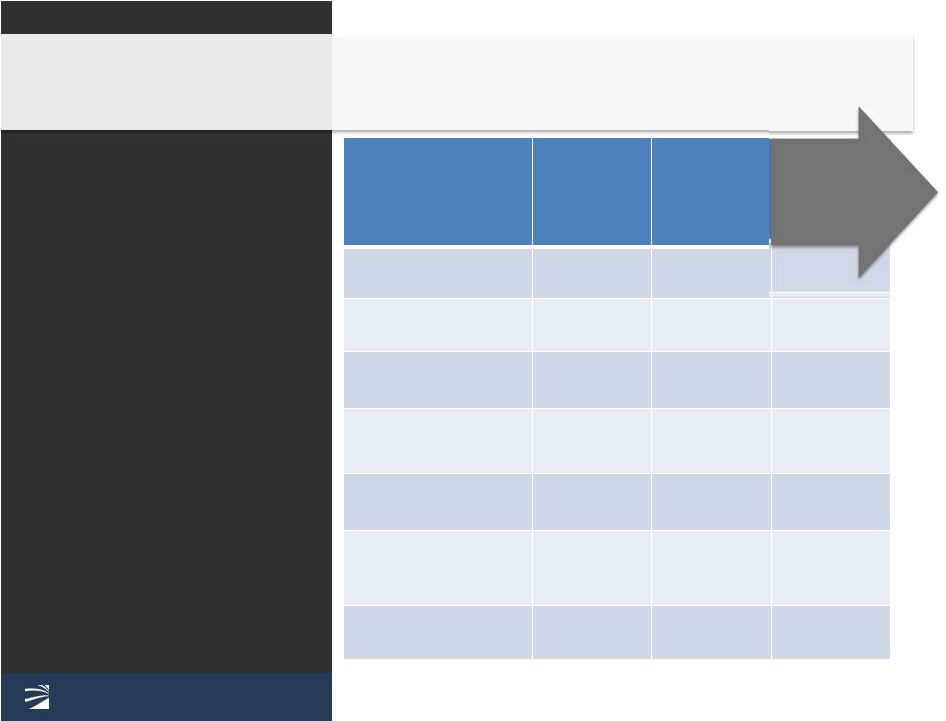 33
Changes to new model:
•
New acquisitions and
increased services lower gross
margin
•
Increased customer funded
R&D from new acquisitions
and lower SG&A more than
offset gross margin decline
•
Amortization addback to
operating income increases
Adjusted EBITDA target
(1)
Other OPEX includes, Impairment of Goodwill and Long Lived Assets, Change in the fair value
of the liability related to the LNX earn-out, Restructuring, Gain on Sale of Long
Lived Assets, and Acquisition Costs and Other Related Expenses. (2)
Amortization includes fair value adjustment from purchase accounting and $4.9M LNX earnout
reversal in FY12. ©
2012 Mercury Computer Systems, Inc.
GAAP
FY12
Historic
Target
Business
Model
Revenue
100%
100%
Gross Margin
56%
54+%
45-50%
R&D
19%
High Teens
11-13%
SG&A and other
OPEX
(1)
25%
Low-mid
20’s
Low 20’s
Amortization
(2)
0%
—
2-3%
Income from
Operations
12%
12-13%
12-13%
Adj EBITDA
20%
17-18%
18-22%
Current
Target
Business
Model
100%
Updated
business
model
raises
Adjusted
EBITDA
Target |
 34
•
Defense revenue growth accelerated in FY12
•
Profitability restored and improved
•
Built increased levels of Adjusted EBITDA
•
Converted earnings growth to healthy free cash flows
•
Strong balance sheet with no debt
•
Exceeded historic target model
•
Established new target model with higher Adjusted EBITDA
•
Prudently managing cost structure during challenging FY13
Financial summary
©
2012 Mercury Computer Systems, Inc. |
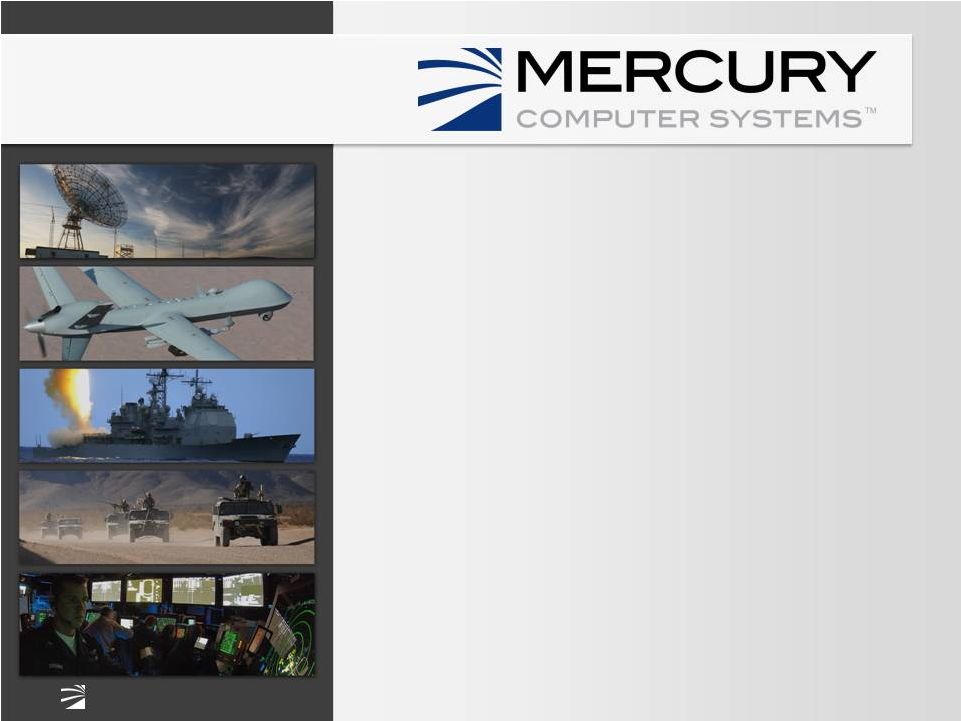 ©
2012 Mercury Computer Systems, Inc.
Appendix |
 Adjusted
EBITDA reconciliation Years Ended June
30,
(000'S)
2008
2009
2010
2011
2012
Income (loss) from continuing operations
$ (4,437)
$ 7,909
$ 28,069
$ 18,507
$ 22,619
Interest expense (income), net
(3,129)
492
(151)
45
27
Income tax expense (benefit)
3,710
109
(9,377)
8,060
9,152
Depreciation
7,372
5,640
5,147
6,364
7,859
Amortization of acquired intangible assets
5,146
2,414
1,710
1,984
3,799
Restructuring
4,454
1,712
231
—
2,821
Impairment of long-lived assets
561
—
211
150
—
Acquisition costs and other related expenses
—
—
—
412
1,219
Fair value adjustments from purchase accounting
—
—
—
(219)
(5,238)
Stock-based compensation costs
8,848
4,582
4,016
5,580
6,616
Adjusted EBITDA
$ 22,525
$ 22,858
$ 29,856
$ 40,883
$ 48,874
©
2012 Mercury Computer Systems, Inc.
36 |
 ©
2012 Mercury Computer Systems, Inc.
37
Free cash flow reconciliation
Years Ended June
30
2007
2008
2009
2010
2011
2012
Cash flows from operating activities
$ (10,313)
$ 13,726
$ 11,199
$ 15,708
$ 31,474
$ 31,869
Capital expenditures
(8,109)
(4,625)
(4,126)
(7,334)
(8,825)
(9,427)
Free cash flow
$ (18,422)
$ 9,101
$ 7,073
$ 8,374
$ 22,649
$ 22,442 |
